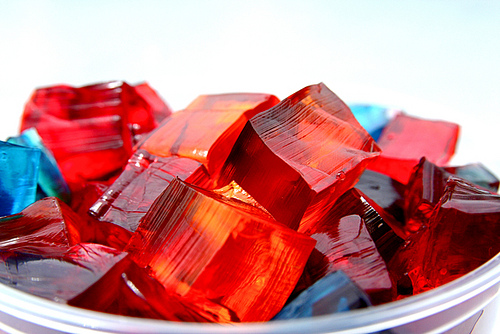The Jell-O box that doomed the Rosenbergs

The 1951 trial of Ethel and Julius Rosenberg as Communist spies was the biggest event of the day. The Rosenbergs were accused of feeding secrets from Los Alamos National Laboratory to the Soviet Union. And one of the key pieces of evidence turned out to be a humble Jell-O box.
David Greenglass, Ethel Rosenberg's brother, was working at Los Alamos. When he turned state's witness, he explained that he was feeding secrets to the Rosenbergs through a courier. But how to verify the identity of the courier? The Rosenbergs settled on a special code item: a Jell-O box top, torn in half.
The Rosenbergs gave one half of the lid to Greenglass, and the other half to their courier. When the courier met Greenglass, they whipped out their pieces of box top and compared. When the tops proved to be a match, Greenglass knew it was safe to hand over the information.
This low-tech spycraft solution was as simple as it was elegant. If either Greenglass or the courier were arrested, it would just look like a random bit of trash. The ubiquitous Jell-O was a common staple of pantries nationwide. And yet, only the other half of the box top would fit properly. You couldn't reverse-engineer a "key" to this "lock," no matter how hard you tried. Particularly since the Rosenbergs chose a box flap which was densely printed with text, making it obvious where the torn halves fit together.
The famous Jell-O box itself is preserved for history in the National Archives. It is Raspberry flavor (an excellent choice, being one of the better flavors). The box top itself is printed with a recipe for Coconut Bavarian Cream, which frankly sounds pretty delicious. (Fold whipped cream into partially-cooled raspberry Jell-O, add shredded coconut, and cool until set.)
Image courtesy Flickr/stevendepolo

0 comments